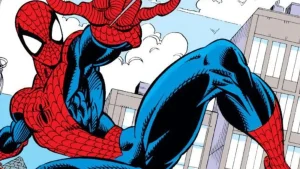Let me start with a confession: before Akira, I thought anime was just a collection of overly dramatic while defying every law of physics. And while Dragon Ball Z has its charm (don’t come for me, Goku fans), it wasn’t exactly something I’d call “cinematic.”
Then came Akira — a film that exploded onto my screen, dragged me through a neon-lit dystopian Tokyo, and made me question everything I thought I knew about animation and storytelling. Dramatic? Yes. But it’s Akira. It deserves all the drama.
If you’ve ever tried convincing someone to watch anime, you’ll know it’s a tricky business. Mention the word “anime,” and people either assume you’re talking about Pokémon or something… less appropriate for family viewing. But Akira? It’s a different beast. Released in 1988 and based on Katsuhiro Otomo’s manga of the same name, Akira is a cyberpunk story that redefines anime’s potential. It’s the movie that turns skeptics into fans and casual viewers into obsessive collectors of limited-edition Blu-rays. (Don’t look at my shelf.) Why? Because it’s impossible to dismiss Akira as “just a cartoon.” The film demands to be taken seriously.
You know how people say that classic movies “haven’t aged well”? Yeah, Akira laughs in the face of that idea. More than three decades later, its animation is still jaw-dropping. Every movement feels meticulously handcrafted — because, well, it was. Over 160,000 individual frames were drawn. Most animated films at the time were churning out 12 frames per second. Akira went full throttle with 24.
The plot of Akira can be… confusing. The first time I watched it, I spent half the film wondering if I’d accidentally skipped a prequel.
The genius of Akira lies in its refusal to explain itself. Unlike later anime that would bend over backwards to exposition-dump their world-building, the creators trust their audience to understand that Neo-Tokyo exists in a state of perpetual reconstruction because someone already nuked the old one. The psychic children speak in riddles not because the script is being mysterious, but because precognition probably does make linear conversation impossible. Even Akira himself appears for maybe five minutes of screen time, yet his absence drives the entire narrative. It’s the kind of confident storytelling that makes you realize how much most media underestimates its audience.
Let’s talk about that motorcycle scene — and if you know, you know. Kaneda’s bike sliding sideways through Neo-Tokyo while Geinoh Yamashirogumi’s otherworldly score builds to a crescendo is a visual storytelling that establishes character, world, and tone without a single word of dialogue. Compare that to modern anime where characters feel compelled to narrate their own fight scenes, and you’ll understand why Akira remains in a league of its own. The film respects the medium of animation enough to let images do the talking.
It’s an anime that doesn’t particularly care if you like anime. It predates the kawaii culture export, the moe aesthetics, and the otaku pandering that would come to define anime’s global perception. Akira is brutally Japanese in its sensibilities — the existential dread, the corporate dystopia, the casual acceptance of societal collapse — yet universally human in its themes. It’s a piece of animation that doesn’t need to code-switch for Western audiences because its themes translate across all cultures.
The film’s influence on everything from The Matrix to Stranger Things is obvious to anyone paying attention, but its real legacy lies in proving that animated films could be auteur works. Before Akira, animation in the West was largely seen as children’s entertainment or niche adult comedy. Creator Katsuhiro Otomo’s vision showed that drawn images could carry the same emotional weight as any live-action film.
Decades later, Akira feels prophetic. The surveillance state and social inequality that drive the film’s dystopia aren’t science fiction anymore. Tetsuo’s body horror transformation still makes viewers squirm not because the animation is gross, but because it taps into something fundamentally unsettling about losing control of your own identity. The real test of any gateway anime isn’t whether it holds up to adult scrutiny — it’s whether it still feels dangerous. Akira passes that test with flying colors. It remains the rare anime that feels genuinely transgressive in its vision. That’s exactly why it hooked me as a teenager and why it continues to create new anime fans today.
Sure, some might argue that other anime films (cough Your Name cough) have surpassed Akira in terms of popularity or emotional resonance. But classics aren’t about being the biggest or the flashiest. So, if you haven’t seen Akira yet, what are you waiting for? Grab some popcorn, dim the lights, and prepare to have your mind blown. Just don’t blame me if you end up scouring eBay for a replica Kaneda jacket.
The post This is Why Akira Got Me Into Anime (And Will Always Be A Classic) appeared first on ComicBook.com.




